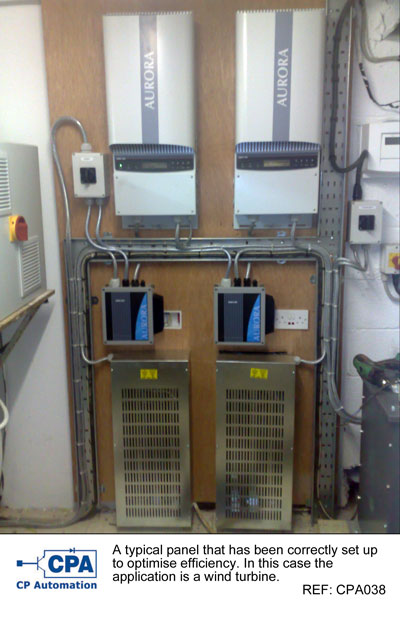Motor efficiency is often overlooked completely when companies are addressing energy saving and the operating expenditure reductions that go hand in hand with energy saving.
Even engineering companies are prone to place it somewhere beneath turning all the lights off when not in use and negotiating with their supplier to get a lower price per kilowatt hour. But there is something the designer can do about this, by specifying the right processes and hardware at the outset.
Designers that do invest time and money in energy reduction rarely get much further than specifying inverters. However, there are a host of additional measures that can be addressed with very little capital expenditure and they all result in a long term profit as a result of reduced overheads. Here Tony Young director of CP Automation, a specialist in the service and supply of drives, controls and resistors, presents his top five tips for ensuring that the motors on your application run as efficiently as possible.
Tip one: Consider a soft start, where appropriate
Soft starts are increasingly common on pump applications and they dramatically reduce the energy used when starting a motor. They are also common on conveyors, where the smooth start can stop the goods being moved ending up in a pile at bottom of the belt! As an alternative to a motor starter resistor or an inverter they can be profitable, but only if the application is assessed correctly in the first instance and the device is sized appropriately.

Tip two: Make like a light switch and turn it off!
Timing devices can be a hugely underused and very cost effective way of saving energy on non-continuous use applications. Often pumps and fans run constantly, even if there are times of day when there is no demand. Furthermore, even on applications where, for instance, the movement of a conveyor is only required when another piece of automation is positioning goods on it, a timing device can be used to turn the motor of more quickly; saving energy and cash.
These devices can be extremely simple timers or quite sophisticated PLCs (Programmable Logic Controllers) and, when combined with the right sensor, can be set to respond to environmental conditions as well as just the time. Furthermore, if you have an inverter fitted on your application already then you may well have the capacity for timing in situ, in the form of a built in PLC. Most inverter manufacturers now offer devices of this kind but you will need to invest in more than a basic model to get it. However, there are also plenty of other devices on the market that feature built in PLCs, from display panels to robot controllers, so you may well find the capacity for timing is already present in your application, even if you are using a basic inverter.

Tip three: Don’t be tempted by cheaper alternatives
Choosing a high efficiency motor isn’t always a given in every application; particularly if someone in the buying chain is looking at only the initial capital expenditure of the application and not it’s long term running costs.
So my advice is stick, metaphorically speaking, to the speed limit and purchase a high efficiency motor even if you think you can get away without one.
Tip four: Choose the right motor in the first place
The first step should always be to ensure you are fitting the right size of motor for your application in the first instance. As design engineers we love to over specify ‘for tomorrow’ but for our friends in plant and maintenance this just means bigger energy bills. A good provider of motors, controls or inverters can provide the information to help you achieve this.
Furthermore, if you plan to add an inverter at the design stage or later as a retrofit product, ensure that the motor is inverter rated to start with. Otherwise, any retrofit project will involve replacing the motor as well.
Tip five: Consider a feed in tariff
It isn’t well known that users of industrial motors can get money back from the energy provider by selling excess energy produced during braking back to the grid. This is done using a feed in tariff, exactly as it is with wind turbines and solar panels. It can be achieved using either a combination of two inverters or, much more efficiently, by using a specialist product CP Automation provides called RevCon, which is manufactured by German electro-technology specialist, Elektrotechnishe Anlagen.
Just implementing a few of these tips will result in a reduced energy expenditure on running motors, and in all likelihood other associated equipment. If you do all of them where relevant, you will find it much more effective than just trying to negotiate a lower kilowatt hour price!

